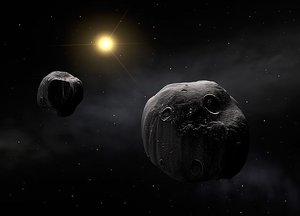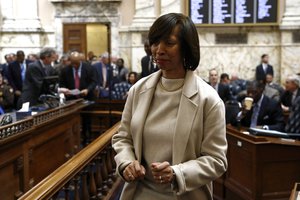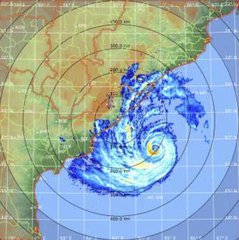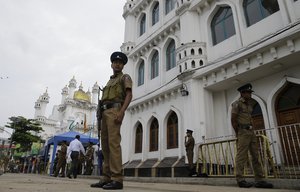Please tell us which country and city you'd like to see the weather in.

Cincinnati
Cincinnati (/sɪnsᵻˈnæti/ sin-si-NAT-ee) is a city in the U.S. state of Ohio that serves as county seat of Hamilton County. Settled in 1788, the city is located on the north side of the confluence of the Licking with the Ohio River. The latter forms the border between the states of Ohio and Kentucky. Cincinnati is the third-largest city in Ohio and the 65th-largest city in the United States with a population of 296,945 people at the 2010 census. The larger Cincinnati metropolitan area had a population of 2,214,954 in 2010, making it the 28th-largest Metropolitan Statistical Area (MSA) in the United States and the largest centered in Ohio. The city is also part of the larger Cincinnati–Middletown–Wilmington Combined Statistical Area (CSA), which had a population of 2,172,191 in the 2010 census.
In the early 19th century, Cincinnati was an American boomtown in the heart of the country; it rivaled the larger coastal cities in size and wealth. Throughout much of the 19th century, it was listed among the top 10 U.S. cities by population, surpassed only by New Orleans and the older, established settlements of the Eastern Seaboard; at one point holding the position of sixth-largest city for a period spanning consecutive census reports from 1840 until 1860. It was by far the largest city in the west. Because it is the first major American city founded after the American Revolution as well as the first major inland city in the country, Cincinnati is sometimes thought of as the first purely "American" city.

Cincinnati (horse)
Cincinnati (ca. 1860–1878) was General Ulysses S. Grant's most famous horse during the American Civil War. He was the son of Lexington, the fastest four-mile Thoroughbred in the United States (time 7:19.75 minutes) and one of the greatest sires. Cincinnati was also the grandson of the great Boston, who sired Lexington.
At an early age, Grant emotionally bonded to horses. A shy, quiet child, he found joy in working with and riding them. Grant excelled in horsemanship at West Point, and at graduation, he put on an outstanding jumping display. Grant owned many horses in his lifetime, including one named Jeff Davis, so named because he acquired it during his Vicksburg Campaign from Jefferson Davis's Mississippi plantation.
Cincinnati was a gift from an admirer during the War. The horse was large (17 hands (68 inches, 173 cm)), handsome, and powerful, and he quickly became Grant's favorite. When Grant rode Cincinnati to negotiate Robert E. Lee's surrender at Appomattox Court House, the animal became immortalized. Virtually all depictions of Grant in drawings, granite, and bronze, are astride Cincinnati including at the Ulysses S. Grant Memorial, located on the Mall in Washington, D.C., at the base of Capitol Hill.

Sports in Cincinnati
Cincinnati, Ohio is home to seven major sports venues, two major league teams, eleven minor league teams, as well as hosts five college institutions with their own sports teams.
Venues
Major league teams
Radio Stations - City of Cincinnati
SEARCH FOR RADIOS
Cincinnati
I've been to your town
Ain't nobody around
I've been to your city
Ain't no city like Cincinnati
The first time I've been there
In the rollin heat
I saw black love spent
And angel wings
I saw white dust choke
And kill and end the violence
And I know I'm running the American Dream
Red, White, and Blue blood
Run at the seams
Bitter sweet liberty
Don't mean shit to me
Hey I've been to your town
Ain't nobody around
Hey baby I've been to your city
Ain't no city like Cincinnati
Hey I run along to Mexico
Some water is cold up the coast
You know I bleed the sun
The ressurection
I run along to Ohio
Drive past the grave of an old romance
Never felt more alive than Suicide Cincinnati
Cincinnati
And I've been to your town
Ain't nobody around
Hey baby I've been
To your city
Ain't no city like Cincinnati
Here we are...

Cincinnati
Cincinnati (/sɪnsᵻˈnæti/ sin-si-NAT-ee) is a city in the U.S. state of Ohio that serves as county seat of Hamilton County. Settled in 1788, the city is located on the north side of the confluence of the Licking with the Ohio River. The latter forms the border between the states of Ohio and Kentucky. Cincinnati is the third-largest city in Ohio and the 65th-largest city in the United States with a population of 296,945 people at the 2010 census. The larger Cincinnati metropolitan area had a population of 2,214,954 in 2010, making it the 28th-largest Metropolitan Statistical Area (MSA) in the United States and the largest centered in Ohio. The city is also part of the larger Cincinnati–Middletown–Wilmington Combined Statistical Area (CSA), which had a population of 2,172,191 in the 2010 census.
In the early 19th century, Cincinnati was an American boomtown in the heart of the country; it rivaled the larger coastal cities in size and wealth. Throughout much of the 19th century, it was listed among the top 10 U.S. cities by population, surpassed only by New Orleans and the older, established settlements of the Eastern Seaboard; at one point holding the position of sixth-largest city for a period spanning consecutive census reports from 1840 until 1860. It was by far the largest city in the west. Because it is the first major American city founded after the American Revolution as well as the first major inland city in the country, Cincinnati is sometimes thought of as the first purely "American" city.
Latest News for: cincinnati
The Enquirer's live 'Beyond the Net' FC Cincinnati show returns to Holy Grail-Banks on May 8
The Flying Pig Marathon: A Cincinnati Spring Tradition
WATCH Evan Prater, Garyn Prater commit to Cincinnati Bearcats football
DO NOT USE: The Flying Pig Marathon: A Cincinnati spring tradition
Jesse Winker and David Bell ejected during Cincinnati Reds' 1-0 loss to New York Mets
Ohio Mr. Basketball, former Cincinnati Bearcats recruit, Samari Curtis reopening recruitment
Xenia’s Curtis reopens recruitment after coaching change at Cincinnati
150 years ago, 12 men in Cincinnati took a chance on baseball and changed the world
Millennium Hotel a victim of 'aggression,' accuses city of Cincinnati of smear campaign
Take a tour of the Cincinnati murals – without leaving your house
From a boxer to the moon: These are our top 10 Cincinnati murals
How is a Cincinnati area investment firm tied to college admissions bribery scandal?
Here's how Andy Dalton said he felt about the Cincinnati Bengals drafting Ryan Finley
- 1
- 2
- 3
- 4
- 5
- Next page »





































